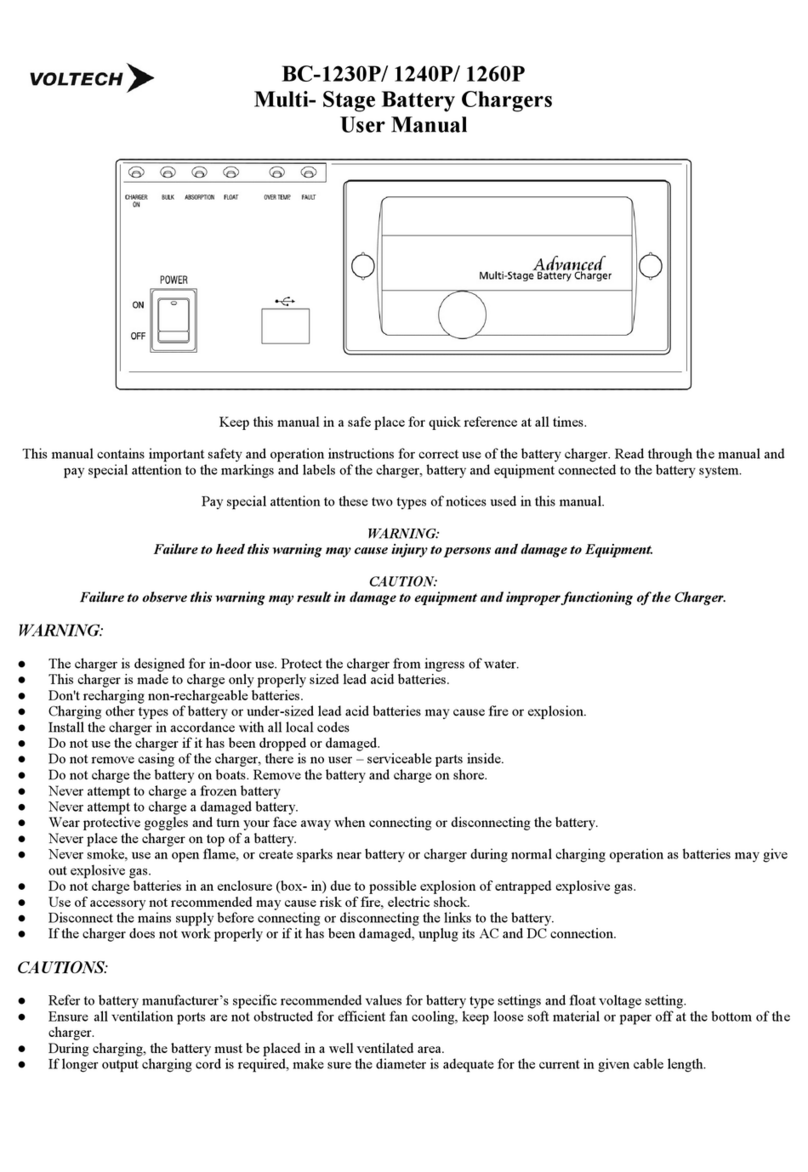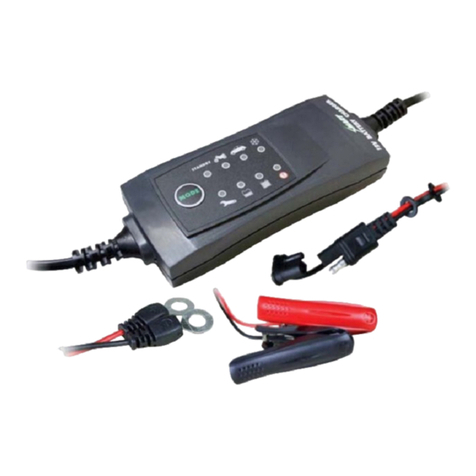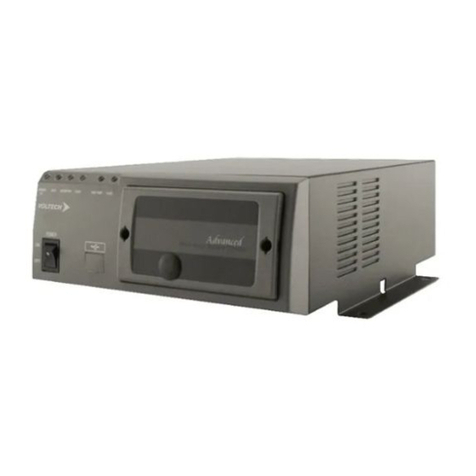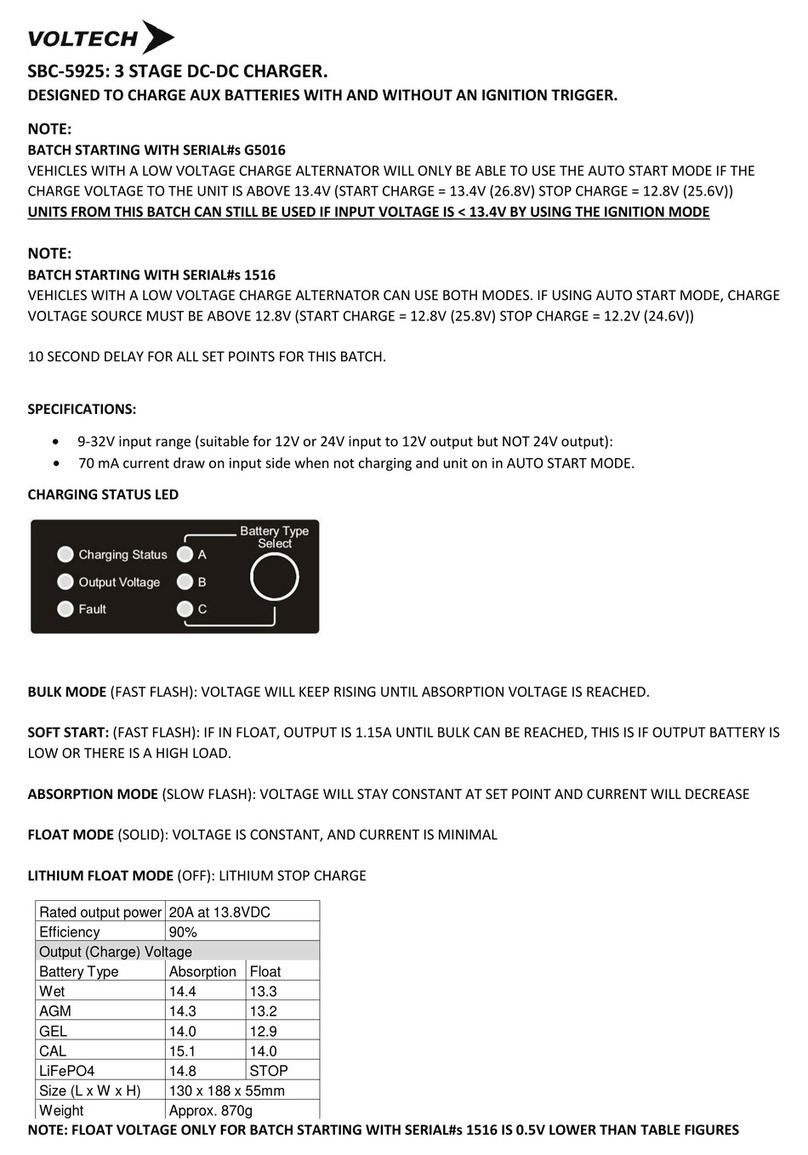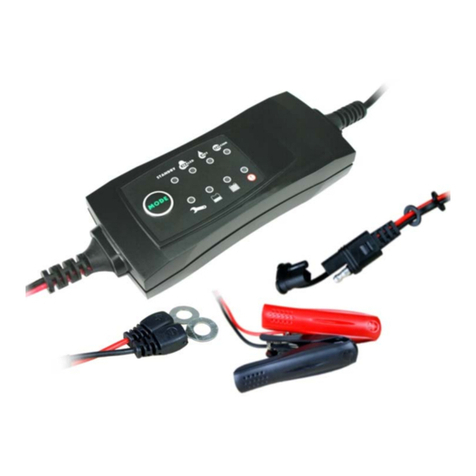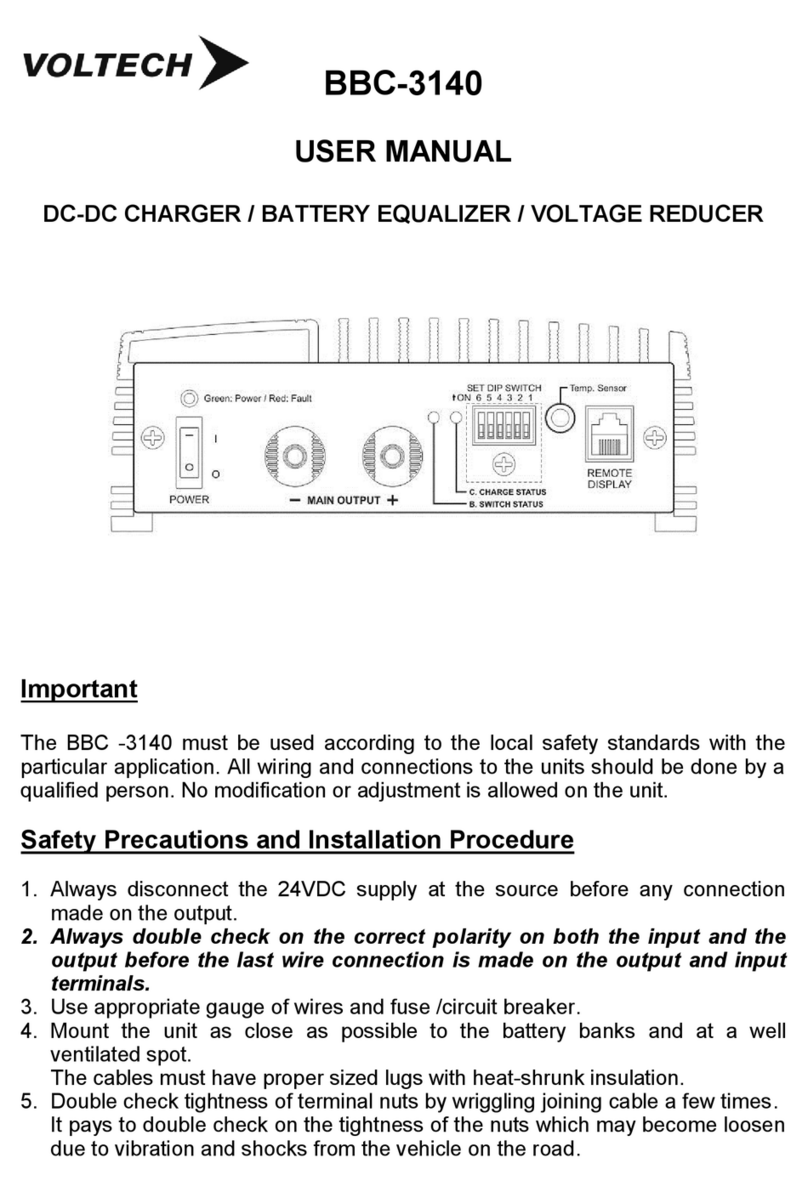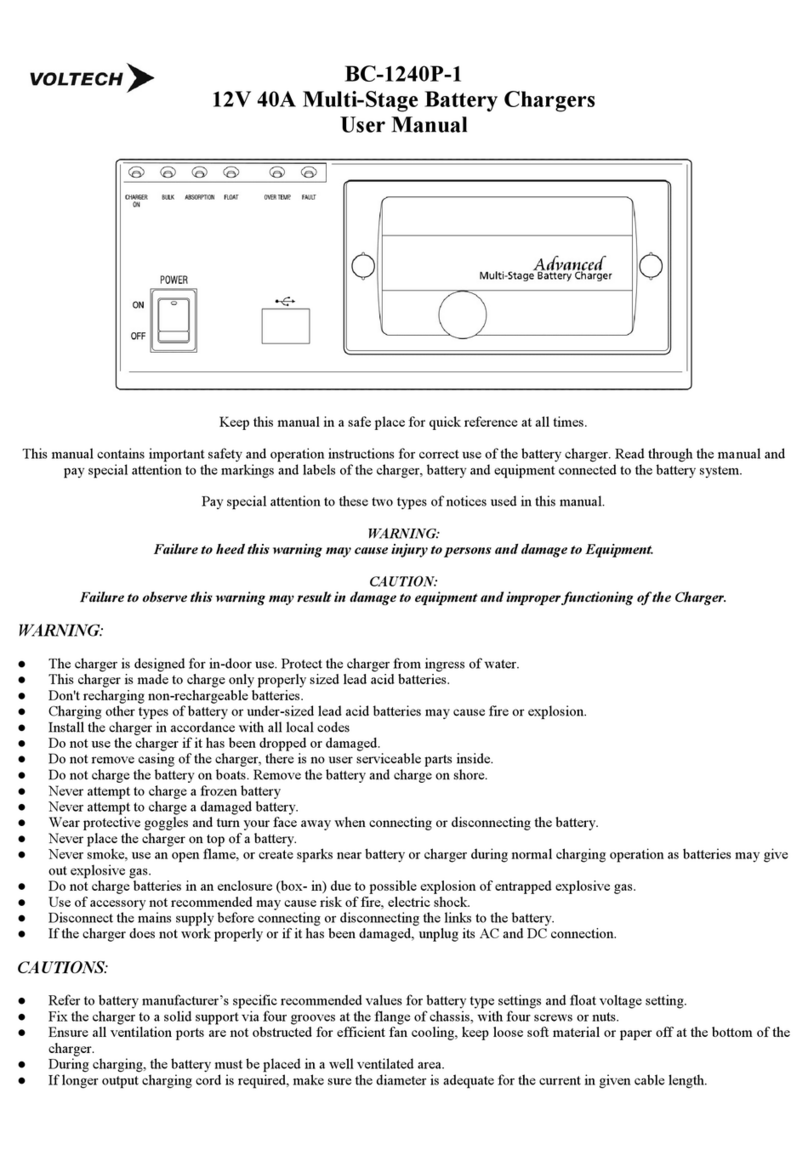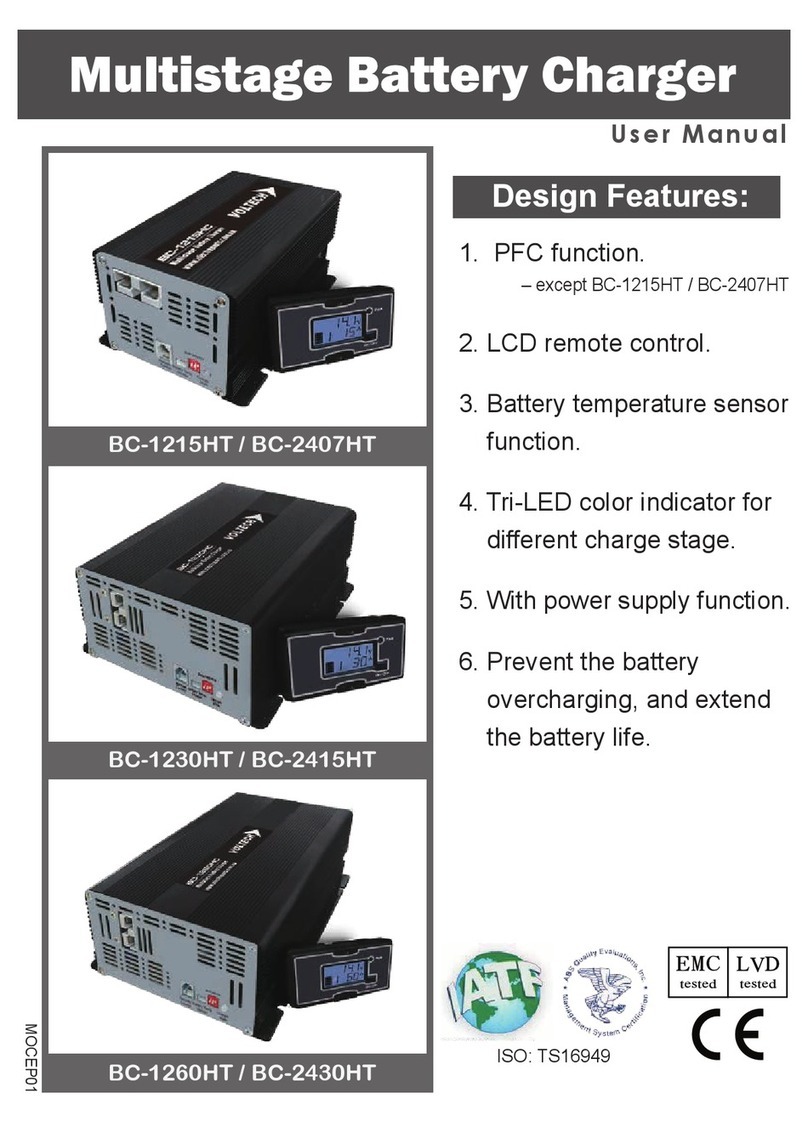
C. Power Level adjustment
End users can Preset the maximum output (charging) current in 10% increments to make the charger suitable for different
Battery capacities &/or loading conditions.
Make sure the Main Switch is OFF before adjust the power level.
Use a small slot type screw driver to select the maximum output current via the Charging Current Selection Switch (5).
The selected max. output current can also be viewed on the optional remote panel (HBR-3100).
Position 0: 100% of the rated current
Position 9: 90% of the rated current
Position 8: 80% of the rated current
Position 7: 70% of the rated current
Position 6: 60% of the rated current
Position 5: 50% of the rated current (E.g.; a 40 Amp charger will be limited to 20Amp Max output at the 50% setting)
Position 4: 40% of the rated current
Position 3: 30% of the rated current
Position 2: 20% of the rated current
Position 1: 10% of the rated current
Recommended Battery Capacity
The extended range of AH capacity is based on the appropriate charging current selection 10% to 100%.
Some battery type can take higher charge current.
When in doubt, Always check with the battery manufacturer for recommended charging current.
D. Testing the charger with output open circuit (nothing connected to the output terminal)
On power up, the charger will do a self-check during which all LED indicators are on & fan runs at full speed for a few seconds.
If Self-test was OK; Then the Charger On and the Absorption LED’s will stay on.
After 5 minutes (no load) the Float LED will be come on and Absorption LED off.
Remark: Power Supply Mode
You can connect Loads directly to the output terminal without a Battery and the charger will provide a constant DC source
Voltage according to the ‘Battery type’ and available ‘Output power’ (current) settings selected, (as detailed in Sections B3 & C.)
This feature is handy for caravan installer to check the operation of connected powered appliance or connections.
E. Battery Charger Installation and Connection
Observe the warnings & safety precautions before rushing to install and operate the charger.
Check battery condition, fill up cells for wet battery, clean battery poles.
Secure the battery charger in a well ventilated place, make sure the mounting surface is flat and without soft covering material or
loose paper sheet. The air intake is at the bottom and air outlet at the back. Make sure both intake and outlet are not blocked.
Never place charger on top of battery.
Plug in the AC mains and turn on Power Switch. All the indicators on the front panel will light up, cooling fan spins at full speed
for 10 seconds by means of Self-Testing.
After self-test mode the Charger ON LED and either Bulk LED or Absorption LED will be lit initially (depending on the state of
the battery).
After 5 minutes, if the battery is in a high state of charge, the charger float LED will be lit, otherwise the charger can stay in
either Bulk or Absorption mode for longer periods if needed.
Before connecting or disconnecting the charging cable, turn off the Power Switch and unplug AC cord from the mains.
First connect the Battery Chargers Positive (+) terminal to the Battery Positive (+) Post. Then connect the Chargers Negative (–)
terminal to the Battery Negative (–) Post.
Make sure all the connections are clean, secured and tight. Double check for correct polarity.
Double check again for correct selection of Battery Selection Switch (4) for battery type (default at AGM Pos 4) and Charging
Current Selection Switch (5) for output current setting (default at 100%)
When installed in caravans and similar vehicles, the connection to the supply mains is to be in accordance with national wiring
rules.
When charging automotive batteries:
- The battery terminal not connected to the chassis has to be connected first. The other connection is to be made to the chassis,
remote from the battery and fuel line. The battery charger is then to be connected to the supply mains;
- After charging, disconnect the battery charger from the supply mains. Then remove the chassis connection and then the
battery connection.
